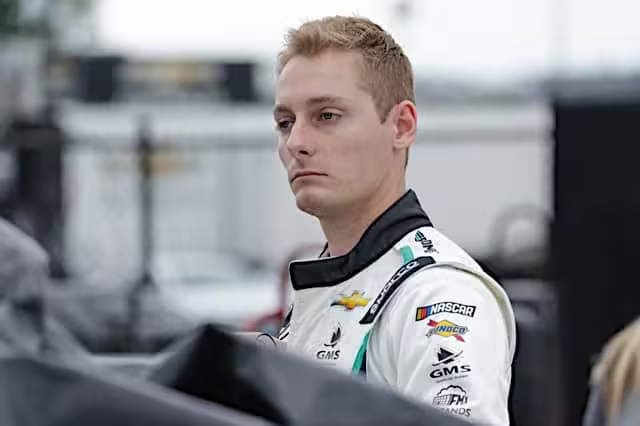Nathan Byrd has made five starts in NASCAR this season with one more scheduled at Phoenix Raceway with Young’s Motorsports in the Craftsman Truck Series.
The Byrd name is not a new name in racing, as Nathan is the fourth generation involved in motorsports. Before the race weekend, Frontstretch‘s Jared Haas caught up with Byrd.
You can either watch the interview or read it below.
Jared Haas, Frontstretch: What type of racing have you done in your career so far?
Nathan Byrd: I would say all kinds. I’ve driven a wide variety of formula cars, different sports cars/touring cars on the lower end, but not like IMSA level quite yet. A wide variety of short track cars, super modified, sprint car, silver crown, midget, focus midget, Pro Late, modified, and as well as some NASCAR stuff with Trucks and Xfinity. I’ve driven a lot of different race cars.
Haas: What’s the biggest change in jumping from a different series into a stock car?
Byrd: Well, I guess it depends on what you’ve driven beforehand. If you’re a Shane van Gisbergen, who’s driven Supercars for years and years, that’s going to be less of a transition than if you were an open-wheel, formula car [driver] like myself.
Even short track stuff like high horsepower, you’re going to have a different level of weight to grip.
How I like to think about the weight-to-grip ratio is NASCAR, especially the Xfinity car, is on the far end of the very high weight, very low grip versus like something I’m driving at Circuit of the Americas right now, testing and developing a new formula car. These things are on the far other end of the spectrum, which is very low weight, very high grip. And it’s less horsepower, but every car driven on the limit is going to have rear slip.
That’s basically depending [on] where you’re coming from. I’m coming from a wide variety of cars, but my professional training is in the formula car realm.
I’m going from a car that does everything that you want to a stock car that does almost nothing that you want, at least at the rate that you would like it to be compared to what you’re used to.
You just have to adjust to the car. It does everything slower and you have to adjust your driving inputs accordingly in order to not fly off the edge of the track, into the wall or hit someone. It’s definitely a learning curve coming from the open-wheel, formula car…
Click Here to Read the Full Original Article at …

